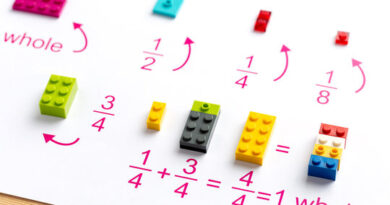What is a Mathematical Model? Learn Six Easy Steps
The method of creating a mathematical representation of a real-world circumstance to make a forecast or provide insight is referred to as mathematical modeling. There is a difference between using a formula and creating a mathematical relationship.
Real-world, complicated problems can be tackled mathematically, yielding a variety of potential answers to help guide decision-making. Because math modeling is so open-ended, students and teachers are sometimes uncomfortable with it. So much unknown information appears to be prohibitive. And what are the most important factors? However, the open-ended character of real-world situations encourages the development and application of problem-solving abilities, creativity, invention, and mathematics.
Mathematical modeling is an iterative process that includes the following components.
- Determine the Issue Because modeling challenges are open-ended, the modeler must precisely define what they actually want.
- Make Hypotheses and Identify Variables since it is hard to account for all of the relevant aspects in a given circumstance, the modeler must decide what to include in their depiction of reality. Making assumptions depicts the variables that will be considered while reducing the number of variables by selecting not to have everything. Relationships between variables will arise due to this process based on observations, simplifications or physical rules.
- Perform the Calculation and relationship between input and output will eventually allow a solution to be identified.
- Analyze and evaluate the solution. When analyzing the model’s conclusions and insights, one must examine whether the answer makes sense.
- The model may usually be refined and the procedure repeated to increase the model’s performance.
- Apply the Model and Report the Results A clear report on the model and its implementation helps others comprehend the model.
Visit MyMathlab Answers if you want interactive classes about math modeling in detail.
When students are pushed for time, their anxiety may lead to unrealistic mathematical relationships. It is not rare to encounter erroneous math. Students, for example, may establish an additive link between the essential variables they identified. Still, the units have no value (for example, adding dollars to time to get a model for resources). Coefficients are frequently employed in models that do not adequately reflect units or have no reason for their selection. Other times, students may have a good notion of a mathematical relationship but overcomplicate it to make the mathematics appear more complicated (for example, introducing a triple integral when really addition is appropriate).
The Advantages of Mathematical Modeling
Many advantages are available to scientists, engineers, mathematicians, and other professionals who employ mathematical modeling, including:
- Because it is math-based, it is exact, allowing you to construct accurate concepts and assumptions.
- It’s succinct, with well-defined rules.
- When attempting to solve a problem, it provides guidance.
- You can select from hundreds of tried-and-true math formulas.
- Computers can be used to conduct calculations and other tasks.
- The outcomes provide you with a thorough understanding of how a system or object functions.
- It can assist you in making rapid and precise selections.
- Using mathematical modeling to address complex problems and improve existing systems can assist almost any sector.
Steps For preparing a Mathematical model
#1 Decide what you wish to learn
What is the goal of constructing a model? Make a list of the data you want to find with the model. It is important to ask this question before designing your model, or you may wind up with a model that does not meet your goals.
- Do you wish to make a prediction? Learn how to govern something? Or should I do something else?
- Assume you want to know how much space you have in a storage unit to see how many boxes you can fit. You will develop a model to forecast the quantity of space in your storage unit.
#2 Decide on the physical principles governing the model you intend to build
Do you need to think about gravity, volume, time, and so on? Make a list of any variables that need to be addressed when developing the model.
- Your storage unit’s volume must be determined to determine the quantity of space available.
- You should also remember that some space will be lost because some goods may be irregular, making it challenging to utilize every inch of the storage box.
Sometimes models can be complex, and you might need expert help, or you can look for Delta Math Answers to solve your problem.
#3 Determine the equations you need to use to arrive at your answer
What equations and formulae will you need to solve your problem? How will you put these equations and formulas to use? Make certain that you understand how to enter the data you have into the equation.
#4 Create your model
You should be able to generate your model once you have completed the planning phase. Create a mathematical model using your diagram, data, and other information. Check your notes frequently to ensure correctness.
Make certain that your model accurately portrays the relationship between the data that you are attempting to achieve.
Computer software may be required for more complicated models.
#5 Test your model
Before attempting to perform anything else with your model, it is critical to validate its results. Apply your data to see if the model is correct. Are your outcomes as expected? Are they logical? Are the outcomes repeatable?
#6 Determine how to improve the model
To make your model usable for future applications, think about how it could be enhanced. Is there anything more you should have thought about? Is it possible to remove any restrictions? Before you use your model again, try to figure out how to improve it.
Significance of Mathematical Models
Mathematical models have real-life significance. It is primarily used in physics. In physics, idealized models are commonly used to simplify things.
Molecules, for example, can be represented using molecular orbital models, which are approximate solutions to the Schrödinger equation. Physics models are frequently created in engineering using mathematical methods such as finite element analysis.
It can also be used in the construction of buildings and architecture. Thus learning to make mathematical models can be advantageous for us.




